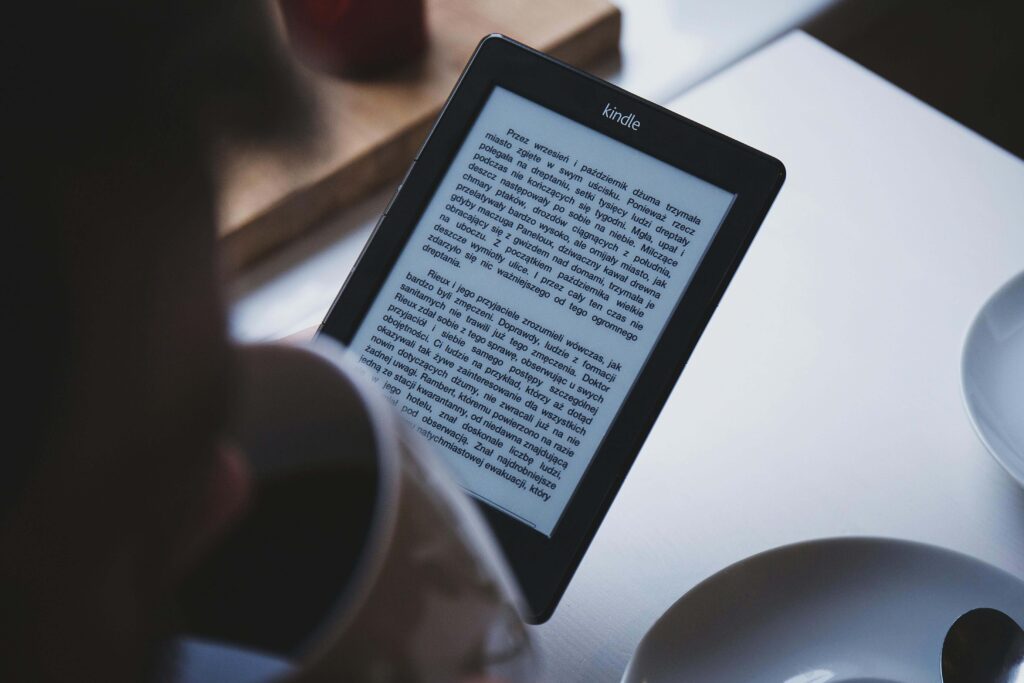
If you’re debating between traditional publishing and self-publishing, there’s a good chance you care about the money. Not the dream of being discovered, not the imaginary book tour, but cold, hard revenue.
That’s smart. Because writing a book takes time, effort, and emotional energy, and if you’re going to pour yourself into it, you deserve to know where the payoff is.
You’re asking the right question, because while both paths can lead to success, they have very different profit models. One gives you upfront cash but smaller slices of each sale.
The other gives you full ownership, but you’ll have to build everything from scratch. And if you’re hoping to turn writing into a career, understanding the earning potential of each is non-negotiable.
I’ve had friends in both camps. Some got solid book deals and ended up stuck in contracts that barely paid beyond the advance.
Others went the indie route, learned the ropes, and made four figures a month from books most people have never even heard of. That’s why comparing traditional publishing vs self-publishing revenue is both smart and necessary.
Let’s break down what you really need to know when comparing traditional publishing vs self-publishing revenue.
Traditional Publishing Revenue: Advances and Low Royalties
Traditional publishing offers what many call the golden ticket: a book deal, an advance, and a team behind your work. But that golden ticket comes with some fine print most authors don’t read until it’s too late.
First, let’s talk about advances. When a traditional publisher signs you, you typically receive an advance against future royalties. That advance might range from $5,000 to $15,000 for debut authors, enough to feel exciting, but not exactly enough to quit your day job.
Some authors with strong platforms or marketable ideas can land $50,000 to $100,000+ deals, but those are rare. And remember: advances are split over time, sometimes paid out in thirds or quarters across manuscript delivery, publication, and post-release milestones. It’s not one lump sum.
Once your book starts selling, you earn royalties. But you don’t see any of that money until your advance is paid back through sales. That means if your book never earns more than your advance, that’s the only money you’ll ever make from it.
Here’s what standard royalties look like:
- Hardcover: 10% of list price on the first 5,000 copies, 12.5% on the next 5,000, and 15% after that
- Paperback: Usually around 6% to 8% of list price
- eBooks: 25% of net revenue (which is often just 12.5% of the actual sale price)
To put that in perspective: let’s say you sell 10,000 hardcover copies at $20 each. With a 10% royalty, that’s $20,000. If your advance was $15,000, your publisher takes the first $15,000 of your royalty earnings.
Only after that do you start seeing checks. And yes, that can take months or years. In some cases, it may never happen at all.
You can out-earn traditionally published authors with fewer sales because your margins are higher.
Many authors assume they’ll earn more as the book gains traction, but the truth is, most books don’t sell beyond the initial push unless they go viral or win an award.
According to a 2023 survey by the Authors Guild, the median income from book royalties for traditionally published authors was $10,000. That’s the middle, not the low end. So if you’re hoping traditional publishing will pay your bills, you’ll need more than one book and a lot of luck.
I’ve spoken to authors who hit that $15,000 advance milestone and never saw another dime. Meanwhile, their books were still being sold in stores, and their publisher continued to profit from each copy.
Traditional publishing vs self-publishing revenue is a very real conversation, especially when you’re the one putting in the creative work but waiting years for the financial return.
Self-Publishing Revenue: Higher Royalties, Higher Responsibility
Self-publishing puts you in the driver’s seat. That means you’re also the mechanic, the marketer, and the entire pit crew. You’ll make all the creative decisions, from your cover design to the final price tag, but you’re also the one footing the bill and fueling the engine.
If you’re up for the work, you’ll keep more of what you earn. And that can add up fast.
Platforms like Amazon Kindle Direct Publishing (KDP) offer up to 70% royalties for ebooks priced between $2.99 and $9.99. That’s a huge difference compared to traditional publishing royalty rates.
If your ebook sells for $4.99, you’ll make around $3.49 per sale, which means you only need to sell about 1,500 copies to make more than most traditionally published authors earn from their first book.

For paperbacks, Amazon deducts printing costs, but you can still earn 40% to 60%, depending on your pricing and distribution choices. The more strategically you price and promote, the more you keep.
Let’s run the same example: you sell 10,000 ebooks at $4.99. At 70% royalties, that’s $34,900 in revenue before expenses. That’s money going directly to you, not through a publisher, agent, or distributor.
But here’s the flip side: unlike traditional publishing, you’ll need to invest upfront in editing, cover design, formatting, and marketing. If you want to do it professionally—and you should—expect to spend $1,000 to $3,000.
And yes, there are cheaper DIY routes, but quality matters if you want long-term sales.
I self-published a niche guide a few years ago. It didn’t hit any bestseller lists, but it kept selling steadily each month with no outside help.
That book eventually paid for itself within the first three months, and the rest was profit. I didn’t need to sell 100,000 copies to make a good return, just a few hundred readers a month who actually wanted what I had to offer.
That’s the beauty of self-publishing revenue: your earnings scale with your effort and your decisions. When the royalty is high and the strategy is smart, even modest sales can turn into reliable income.
Cost Differences That Affect Your Bottom Line
Traditional publishing doesn’t ask you to open your wallet. The publisher covers the essentials—editing, design, printing, distribution, and even some basic marketing. That’s the upside. You hand over your manuscript, and a team of professionals handles the production.
But the trade-off is clear: the publisher also keeps most of the revenue. You get a slice while they get the pie, because they took on the financial risk.
Self-publishing, on the other hand, requires an upfront investment. You’re acting as the publisher, which means you’re footing the bill before you see a single sale. You’ll likely need to budget for:
- Developmental and copy editing: $500–$2,000 depending on length and quality
- Professional cover design: $100–$500 for something that looks bookstore-ready
- Formatting and layout: $100–$300 if you’re hiring someone or buying software
- Marketing: Variable, but expect to spend on ads, ARC giveaways, and promotional tools
You can trim costs by learning to format yourself or using templates, but cutting corners on editing or cover design can hurt your sales. Readers judge a book by its cover, and they’ll judge you even harder if the first few pages are full of typos or awkward pacing.
But here’s the kicker: once those costs are covered, everything else you make is yours to keep. That’s where self-publishing profit margins start to shine. It’s the difference between working on commission and owning your own storefront.
You control the pricing, the promotions, and how much you reinvest. You’re not just selling a book, you’re building a small business around your work. And once your systems are in place, those costs get easier to manage every time you launch a new title.
Long-Term Earnings: Who Makes More Over Time?
Traditional publishing might give you a bigger check upfront, but it also comes with long waiting periods and rights restrictions. Once you sign the contract, you’re handing over control of your book’s future.
Most contracts lock in your book for 5, 7, or even 10 years. That means you can’t easily pull it down, revise it, or re-release it on your own. And if the book underperforms, reclaiming those rights can feel like trying to cancel a gym membership you forgot you signed up for—slow, frustrating, and full of legal red tape.
Self-publishing gives you room to breathe. You can update your manuscript, rebrand your covers, tweak the price, test new keywords, and even relaunch the book entirely if you want to.
If money is a major factor in your decision, self-publishing gives you the better shot.
That kind of control means you can adjust to the market, fix issues quickly, and keep your book relevant months, or even years after launch. This level of flexibility gives you a better shot at maintaining sales momentum long after your initial release window.
According to a 2023 ALLi (Alliance of Independent Authors) report, self-published authors earned a median of $12,000 to $82,000 annually from their books. Meanwhile, traditionally published authors reported median incomes of $6,000 to $20,000.
That’s a noticeable difference. And it adds up fast, especially when you consider that indie authors usually have more than one book in their catalog. I know authors who didn’t make much off their first release but saw their income double when they released a second and third title in the same niche.
They weren’t relying on viral launches; they were building a steady stream of income by keeping control of their assets.
In the long run, self-publishing rewards authors who treat their books like products and their writing like a business. If you’re consistent, thoughtful, and willing to experiment, your catalog can keep earning for years without being trapped in a system that puts you last on the royalty chain.
A Closer Look at the Differences
Here’s where the numbers speak for themselves. If you’re still unsure which publishing path fits you best, this side-by-side breakdown lays out the reality behind traditional publishing vs self-publishing revenue:
Metric Traditional Publishing Self-Publishing
Average Royalty Rate 10% (hardcover) 70% (ebook)
Advance $5,000–$15,000 None
Control Over Pricing Limited Full
Upfront Cost to Author $0 $1,000–$3,000
Annual Median Income $6,000–$20,000 $12,000–$82,000
Speed to Market 12–24 months 1–3 months
These numbers are pulled from author income studies and actual publishing experiences. The average royalty rate is one of the biggest gaps. Traditional publishing often gives you 10% on hardcover, and even less on paperbacks and ebooks.
Meanwhile, self-publishing royalties can hit 70% per ebook, which means you’re earning more per sale right out of the gate.
The advance sounds great on paper, but remember, it’s a one-time payment. You’ll only start receiving additional income if your book sells well enough to “earn out” the advance.
Many authors never make it to that point. In contrast, self-publishing comes with no advance, but the tradeoff is freedom and long-term scalability.
When it comes to control over pricing, traditional publishing has you locked in. You can’t change your book’s price to boost sales or run a quick promotion. Self-publishing gives you full control, letting you test and adjust pricing strategies based on your audience and sales data.

You’ll spend $0 upfront in traditional publishing because the publisher handles everything. But that also means you have no ownership of the production process. With self-publishing, you’ll invest around $1,000–$3,000 if you want your book to compete in quality.
I know that sounds like a lot, but many self-published authors recover those costs within a few months if they’ve done their homework.
The annual median income paints a clear picture. Self-published authors, especially those who publish multiple books, are pulling in anywhere from $12,000 to $82,000, while traditionally published authors are averaging between $6,000 to $20,000. It’s not hard to see where the ceiling is higher.
Lastly, let’s talk about speed to market. Traditional publishing takes 12 to 24 months from signing to bookstore shelves. That’s a long wait. Self-publishing? You can go live in as little as 1 to 3 months if your manuscript is ready and you move quickly. I’ve done it in four weeks when I had a deadline and a plan.
This table doesn’t just give numbers—it gives you a clear idea of what to expect. Once you know how each path works, you can choose based on your priorities: income, control, speed, or support.
When Traditional Publishing Works Better
There are situations where traditional publishing makes sense, especially if your book has the potential to go big, fast.
For one, if you land a six-figure advance, that’s a strong sign the publisher believes in your book’s marketability. That kind of deal can open doors to prime media coverage, international rights sales, and even film or TV options.
If you’re lucky enough to land an agent who secures that kind of contract, it’s worth considering, because six-figure advances are rare, and they usually come with more aggressive support from the publisher.
If your goal is critical acclaim or literary prizes, traditional publishing still carries more weight in those circles. Many major awards, like the Pulitzer or Booker, often require traditional publication.
If you’re writing literary fiction, memoir, or narrative nonfiction and want a shot at those recognitions, this route gives you access to the gatekeepers who matter in those spaces.
If your book has mass appeal and benefits from wide bookstore distribution, traditional publishing offers a logistical advantage. They already have relationships with big retailers like Barnes & Noble, Target, and independent bookstores.
That means your book could end up on a front table or endcap, which can significantly boost early sales. For genres like celebrity memoirs, current affairs, or big-topic nonfiction, this kind of visibility really matters.
And finally, if you prefer a team to manage editing, design, and PR, traditional publishing lifts a huge burden off your plate.
You’ll work with professional editors, designers, and publicists who know how to package and promote a book. That kind of backing is hard to replicate on your own, especially if you’re publishing for the first time.
For some, the prestige and support are worth the tradeoff. I’ve met authors who never wanted to worry about ad campaigns, social media, or ISBNs. They wanted to write, turn in the manuscript, and let someone else handle the logistics.
If that’s your ideal setup and you’re okay with lower royalties in exchange for higher exposure, traditional publishing can be the right fit.
When Self-Publishing Pays Off
Self-publishing is especially profitable if you know how to play the long game and build a business around your books. It works particularly well if:
You write in commercial genres like romance, thriller, self-help, or fantasy. These categories have huge reader bases and hungry fans who binge-read series. They don’t care if a book comes from a big publisher. They care about the story, the characters, and whether book two is already out.
You have an existing audience or email list. If you’ve already built a following, whether through blogging, coaching, podcasting, or even TikTok, you’ve got a head start.
You’re not just selling a book, you’re building a small business around your work.
That audience can be your launch team, your early reviewers, and your first wave of buyers. I’ve seen indie authors hit four figures in the first week just by emailing their list.
You’re comfortable learning about book marketing and promotion. This includes ads, sales funnels, keywords, categories, and launch strategies. You don’t need a degree in marketing, but you do need to understand how people discover books online.
The more you understand buyer behavior, the more strategic you can be with pricing, timing, and visibility.
You’re building a series or long-term catalog. One-book authors often struggle to get traction. But if you’re writing a trilogy, an ongoing fantasy saga, or even a line of practical how-to guides, you’re setting yourself up for recurring revenue.
Readers who love your first book are more likely to grab the next ones, and that’s where the earnings really grow.
Indie authors like Joanna Penn and Mark Dawson have turned self-publishing into seven-figure businesses. They didn’t rely on bookstore placement. They focused on ads, email lists, and smart branding.
Joanna turned her nonfiction platform into a global content hub, while Mark mastered Facebook ads and built automated funnels that sold his entire backlist on autopilot.
I remember watching one of Mark Dawson’s webinars years ago, and it completely shifted how I viewed publishing. He treated it like a business, not a gamble. That stuck with me.
And once I adopted that mindset—tracking sales, testing pricing, and collecting reader emails—things started to click. That’s when self-publishing stopped feeling like a side hustle and started feeling like a real, scalable source of income.
So, Which One Pays More?
If you’re chasing prestige or aiming for awards, traditional publishing might be your lane. There’s no denying that a deal from a Big Five publisher can boost your credibility, especially if you’re targeting media coverage, speaking engagements, or literary recognition.
Your book could land on a bookstore shelf nationwide or be featured in a review column that gets shared by thousands. But that exposure doesn’t always convert into lasting income.
On the other hand, if you’re thinking like an entrepreneur and want control, data, and long-term profits, self-publishing has more earning potential.
You set your prices. You run your ads. You choose your cover, your release schedule, and your sales strategy. That freedom allows you to build and tweak a system that actually works for your audience.
You can out-earn traditionally published authors with fewer sales because your margins are higher. Selling 1,000 ebooks at a 70% royalty gives you a lot more room to grow than 10,000 hardcovers at 10%. You also retain all rights, which opens up income streams like audiobooks, foreign translations, and even merchandise.
I’ve seen self-published authors turn their books into online courses, speaking gigs, and branded journals, things that wouldn’t have been possible under a standard publishing contract.

I’ve worked with authors who regretted signing traditional contracts because they watched their books fade into obscurity while their publishers moved on to the next title.
Their marketing support dried up after the launch window closed, and their royalty checks stopped long before the book stopped selling. Others I know built a steady monthly income by publishing independently, marketing strategically, and listening to their readers.
They didn’t try to appeal to everyone. They focused on the readers who wanted exactly what they were offering.
If money is a major factor in your decision, self-publishing gives you the better shot. You won’t get the big splash or the industry clout, but you will keep more of your earnings, move faster, and grow on your own terms.
Your first book might not hit big numbers, but your third or fourth could earn more in a month than most traditionally published authors make in a year.
Traditional publishing pays you once (if at all). Self-publishing pays you every time someone hits “Buy Now.” And in a world that rewards ownership and speed, I’d rather own my work and keep my profits.
Choose wisely because one path makes you the talent, and the other makes you the boss.




